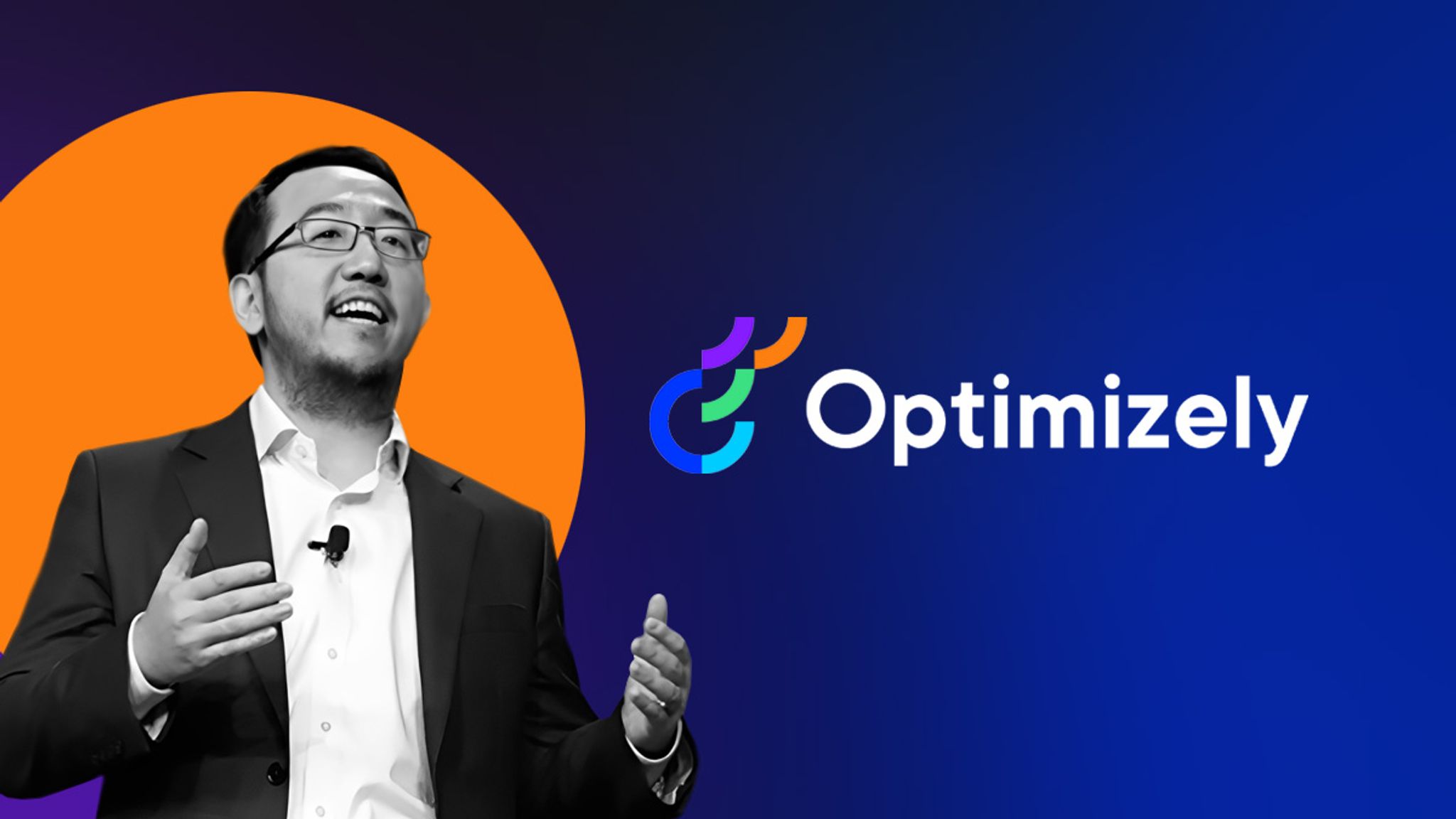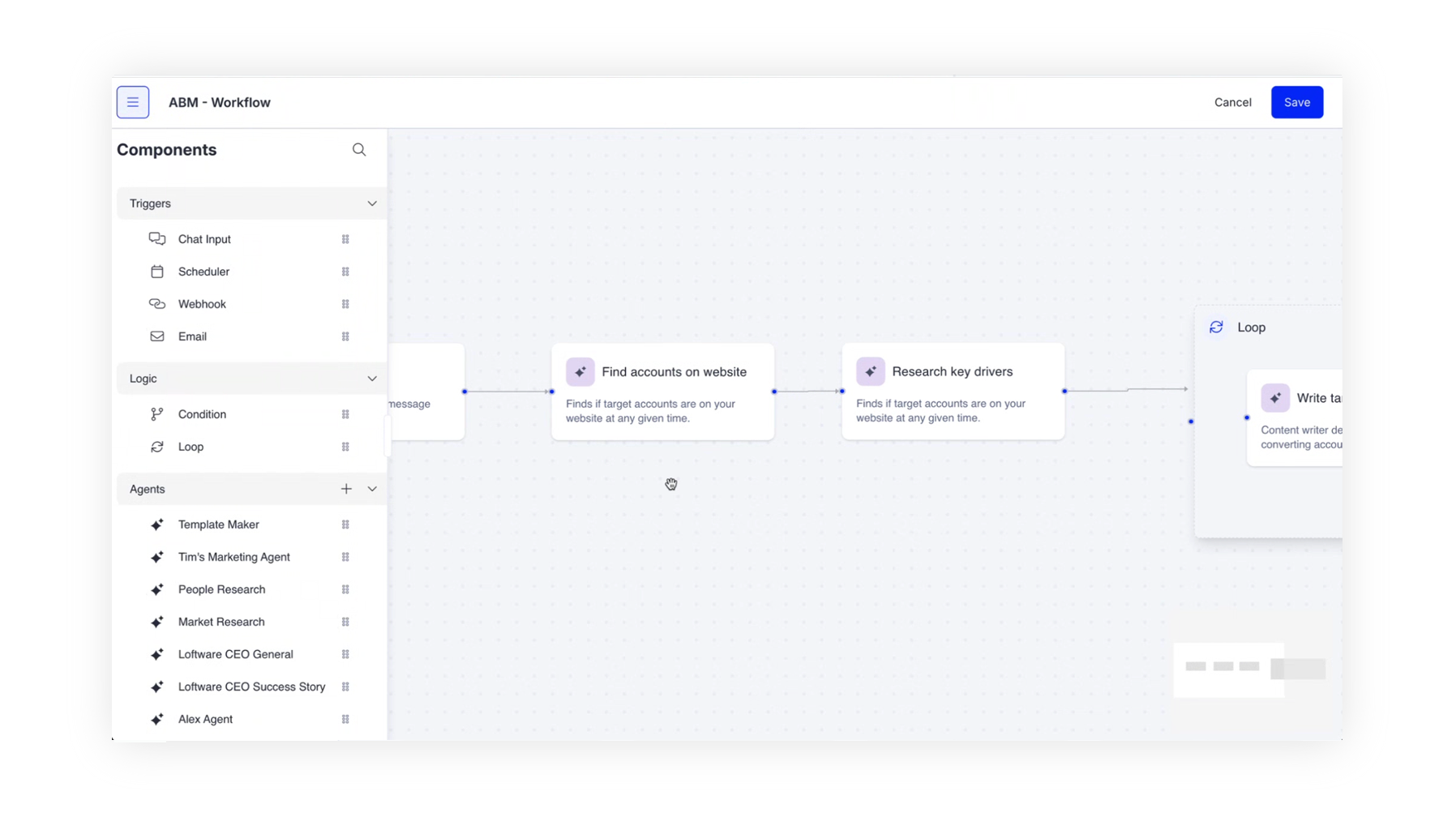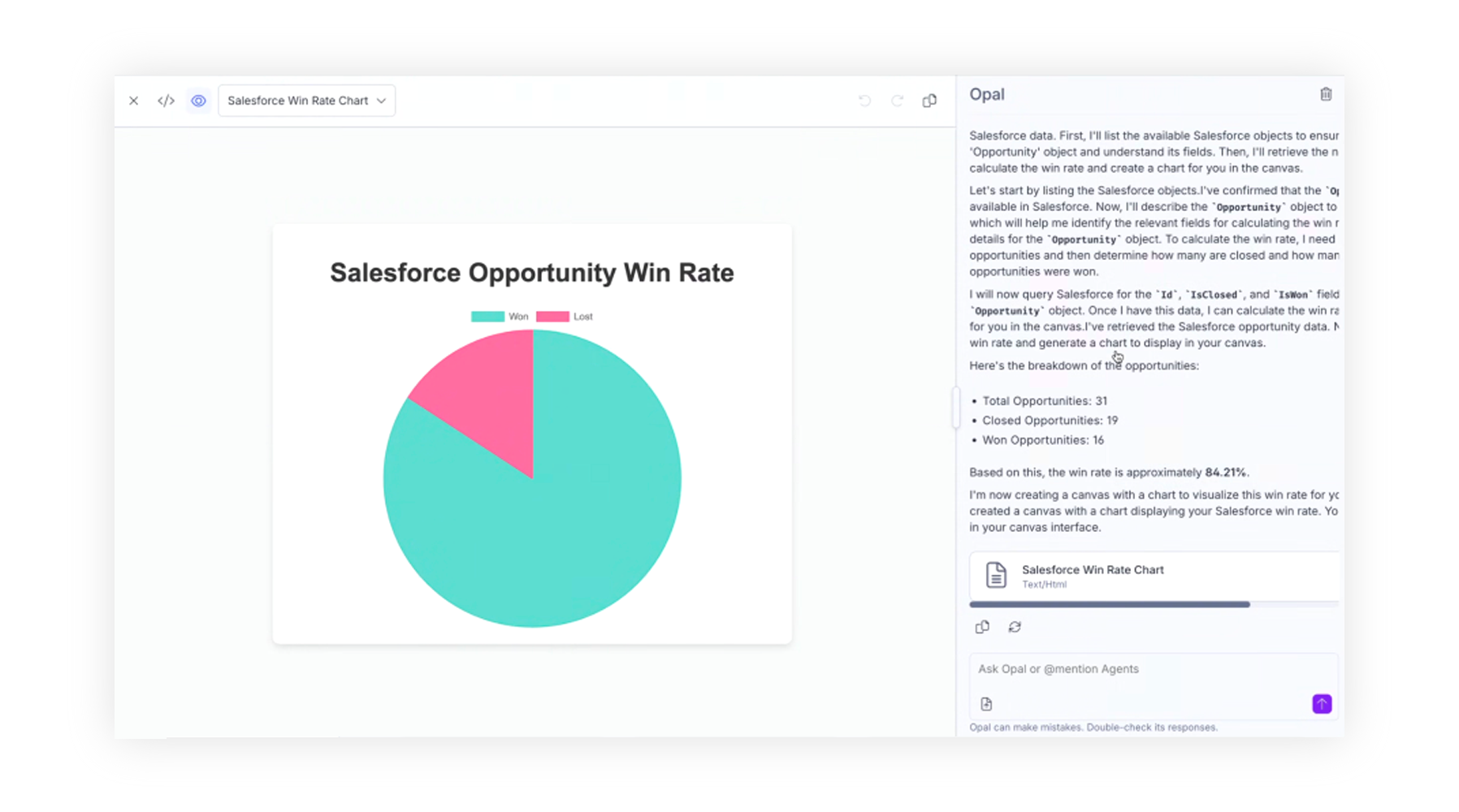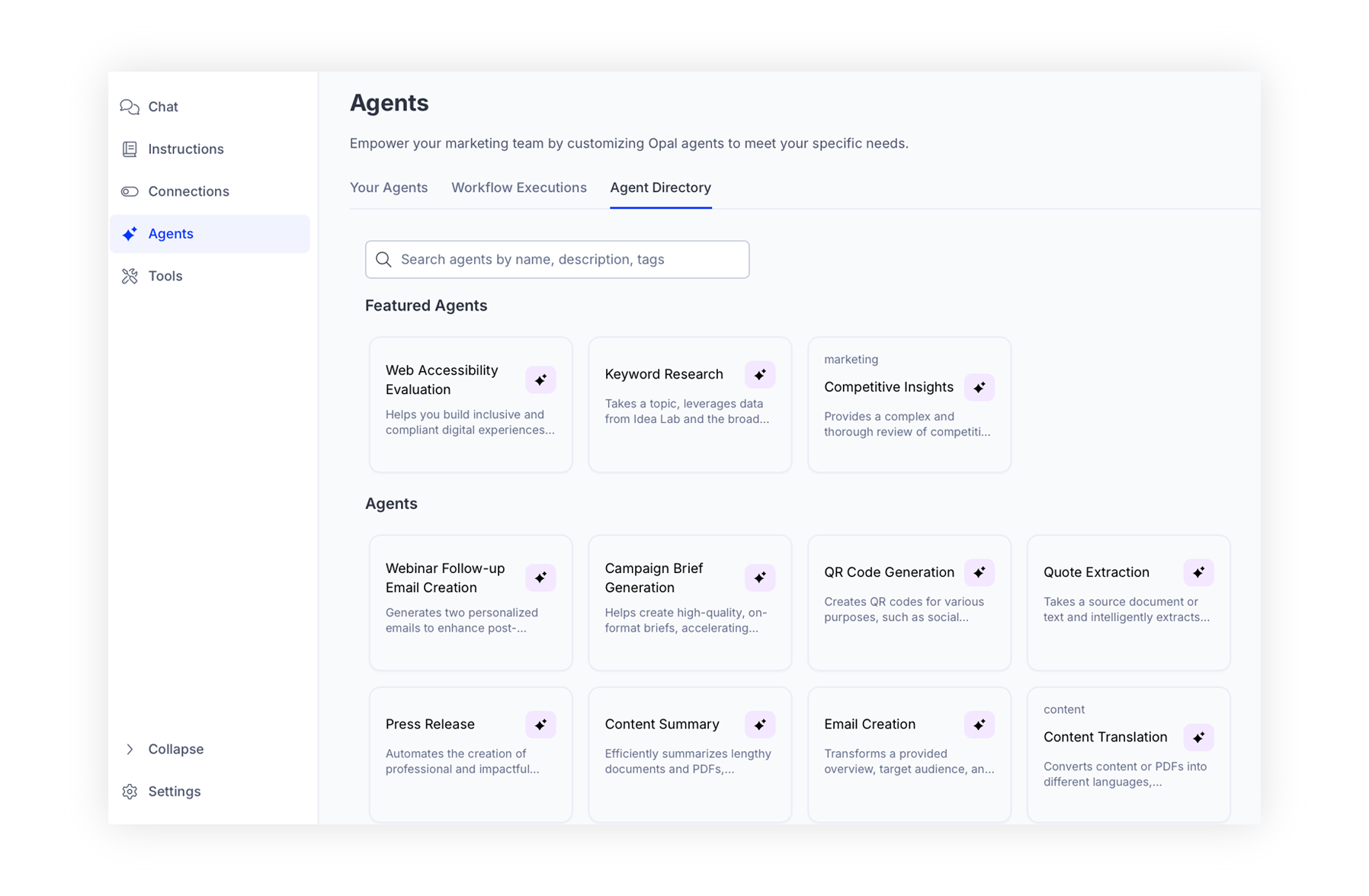Optimizely’s New Agent Orchestration Gives Marketers a ‘Magic Wand’ for Building Custom Workflows

The DXP unveiled its AI-powered customizable workflows – along with a host of specialized agents and other features – at its annual Opticon event in New York, future-proofing its Optimizely One ecosystem with major innovations. Interview with Kevin Li, SVP of Product.
In the days following Opticon 2025, which was recently held in New York City, there was a certain buzz about Optimizely’s shiny new Agent Orchestration.
Was there magic in the air?
Maybe. But there are a lot of agentic spells being cast in our direction, with no signs of slowing down. Betwixt the AI washing and the over-zealous promises, it’s like the word “hype” drank a Red Bull and chased it with a double espresso. This is when smoke and mirrors can derail us.
But these new orchestration features in Opal, which I walked through with Optimizely’s SVP of Product Kevin Li, created a kind of harmonious awe from partners who work in the Opti ecosystem – a choral swoon that had one practitioner I spoke to exclaiming, “I can’t wait to get my hands on it.”
“As we talk to customers, they’re really excited about the whole workflow aspect,” Kevin said, unpacking the details for me. “How we get to the 10x, 20x productivity gains lies in workflow, so we're excited about the ability to build your own workflows with the agents themselves to actually go get more work done.”
What really makes Agent Orchestration so attractive is its simplicity, which is crystallized by an intuitive drag-and-drop interface for deploying agents with ease. You have total control at a visual level, just like designing a call center process or plotting the decision tree of an email campaign. There’s also the ability to connect fluidly with existing data and tools, amplifying the value quotient.
Kevin gave me a real-world demo of a marketer using a chat input as an agent in a non-deterministic scenario. Within the drag-and-drop canvas, he showed me where an agent had been put to work finding accounts on a website from Google Analytics, while another processed research in Salesforce as part of the map.

Optimizely’s Agent Orchestration offers an intuitive drag-and-drop workflow experience. Source: Optimizely
“Then we have a looping mechanism to say, ‘Hey, go write content,’” he explained. “It’s a workflow that mimics what marketing teams are doing today, but it’s a digital employee or team doing that work. I think seeing that is the ‘light bulb moment’ for a lot of people.”
It’s also that all-important “proof is in the pudding” catalyst that challenges any pervasive AI washing, demonstrating just how real – and valuable – Optimizely’s innovation is when executing an agentic strategy.
Optimizely also provides pre-built workflows in the mix, enabling teams to launch right away and customize to their business needs and brand requirements. These capabilities make it even easier to tap into advanced automation without starting from scratch.
But this was just one wave of the magic wand. Along with the announcement of Agent Orchestration, Optimizely also introduced a broader scope of agentic capabilities at Opticon NYC, which are designed to further enhance the company’s comprehensive AI offering with a robust library of specialized agents and extensible integrations.
Building capabilities for an agentic future
When I spoke to Optimizely’s CEO, Alex Atzberger, a few months back, he gave me an impromptu demo of Opal in the Optimizely CMP – a surprising moment that I spoke about at the Boye & Company CMS Connect conference. He seemed to revel in the opportunity to showcase how he, as a leader, was using his company's product to facilitate press strategies.
Since then, the DXP has been on a roll, redesigning the Opal user experience and introducing the industry's first GEO-ready CMS, which gives brands a visibility engine that's purpose-built for the new era of AEO search. With powerful, built-in capabilities for both page and site-wide optimization – as well as onboard GEO analytics – Optimizely’s CMS can help ensure content gets found and stays seen as tools like ChatGPT, Perplexity, and Gemini are increasingly used as search engines.
These advancements all build on Optimizely's vision to accelerate the content supply chain and help brands thrive in a fast-changing digital landscape. They also help to simplify and consolidate control in a single, unified system – supporting marketers as they struggle with the cognitive overload of multiple tools spread across an increasingly complex landscape.
It’s clear that the Optimizely One DXP, armed with these new AI-enhanced capabilities in Opal, is packing a lot of power. Seeing the scope of analytics that can come from tooling itself is impressive, and includes some rich visualization that’s accessible with a single click.

An Opal prompt with analytics and visual chart generation. Source: Optimizely
When I asked Kevin if the breadth of these features is aiming to supplant a reliance on other tools, he reinforced how the marketer’s experience is the key – and Optimizely is helping to reduce the friction and deliver greater productivity.
“We're removing the swivel chair effect,” he said. “The cognitive overload, the 30 different two-factor things that you have to log into, the million tabs that you have to sort of piece together. That's significant overhead right there.”
A new breed of specialized agents
Optimizely’s platform already includes a library of dozens of ready-to-use, specialized AI agents that customers can deploy immediately into their operations. For all intents and purposes, there’s a “just add water” ease of use that can help brands and marketers get rolling.
These off-the-shelf agents cover a wide range of tasks, from drafting and scheduling content to checking copy for legal or compliance issues, and from conducting competitive research to analyzing web performance with Google Analytics. They’re also designed to work seamlessly across Optimizely’s core products, including CMS, CMP, and Experimentation.
As Kevin explained, Optimizely’s Agent Directory acts as a central “hub” for these default tools, which can instantly be added to Opal. Each agent is designed to help with a specific task, like performing a website accessibility evaluation, gathering competitive insights, or creating an email. The directory provides descriptions, capabilities, and configuration details.

Optimizely’s Agent Directory. Source: Optimizely support website
“In our Agent Directory, we have all these pre-built agents, which you can easily install,” Kevin said. “It’s basically a library to choose from. Each one of these has its own standalone documentation page, so you can literally see what it is actually doing and how it’s structured. Over time, we'll have a lot more.”
Together, these customizable agents help marketers stay on brand, move faster, and improve performance across content, campaigns, and customer experiences. And while it’s incredibly lithe, elegant, and simple to browse and activate, Kevin showed me the depth of sophistication behind it all.
“Let’s say you wanted to do research on a competitor,” he explained, showing me the prompt template for requesting the action and the level of detail associated with the ensuing calls. “This all goes into a freshness guardrail around the specific task, so the detail and the quality of agents is very, very good.”
Beyond the pre-built directory (which offers quite a few options), users can also build their own agents, connect data from their existing tools, and layer in custom instructions and tools – powering agents with real-time, contextual information.
Extending the boundaries
One of the challenges with agents rests with the self-imposed limitations of a software ecosystem. But Optimizely is doing its part to expand beyond the box and enable greater freedom.
For starters, Opal is making it simple to extend agent orchestration beyond the platform itself, allowing marketers to connect to their existing data sources or plug in third-party tools – ensuring agents work with the most relevant, real-time context.
“If people build agents inside their own four walls and say, ‘Hey, I can only change stuff in my living room, my kitchen, my bedroom,’ you're going to run into a wall,” Kevin explained. “Instead, you're going to have to look at the neighborhood. You have to look at what other systems are doing. The openness and the platform approach that we've taken is a deliberate, strategic decision.”
That platform approach is a critical point of distinction. As Kevin said, Opal is its own product – and was intentionally architected outside the platform. This allows the orchestration capabilities to live above everything and effectively expand outside those walls.
“We, on purpose, did not build it as an embedded feature,” he exclaimed. “Opal is a standalone piece of it, but it’s the same Opal experience that exists inside our functional applications.”
From a workspace perspective, users can also access Opal directly through their Slack cohort, bringing AI into the conversations where work already happens. This impacts visibility and productivity, and translates into faster AI deployment at a lower cost.
In July, Optimizely introduced its MCP Server for Experimentation, part of an ongoing innovation track for leveraging Model Context Protocol. But MCP is also presenting a gateway to the frontier of agent-to-agent interoperability. This is a growing area of focus for all the major DXP vendors, and as Kevin said, there’s more work ahead to unleash that potential of moving outside the ecosystem – and Optimizely is keenly focused on this.
“Most MCP servers today are local,” he explained. “You essentially download it and run it on your own computer. That’s great if you're a developer and you have your own cloud and GitHub. But from an enterprise use case, you need authentication. You need some sort of remote MCP.”
At the upcoming Opticon in London (which is boasting similar attendance numbers to the New York flavor), Kevin said that they plan to show a beta example of a remote MCP server with test integrations and tools. Breaking down the walls is a key objective, and we’re sure to see even more exploration across agent ecosystems in the coming months.
Powering agency partnerships in the agentic era
As I mentioned, a few of the agencies I’ve spoken to are (in a word) enthusiastic about Optimizely’s agentic trajectory. That tone is markedly different from six months ago, when some of my contacts were far less bullish – even downright depressed – about the specter of AI displacing their jobs and disrupting their revenue models.
With over 700 partners in its combined implementation and technology ecosystem, Optimizely offers a deep bench of agency talent using its platform capabilities to support customers. Needless to say, this is a critical channel for the DXP.
After last year’s Opticon, I spoke to several agencies – including Hero Digital, which won the 2024 “Partner of the Year” award for North America. At that time, Opal was already experiencing a 500% increase in adoption among customers, and Hero’s CTO Chris Kostakis was already feeling the positive vibes around Optimizely’s AI roadmap. As he told me then, the early concept of AI agents helping with content creation and across systems could provide huge value in various use cases.
Fast forward a year later, and it’s a different ball game. In a new ballpark. On an agentic planet.
I asked Karla Santi, CEO and founding partner at Blend Interactive – an Optimizely partner – about her take on Opal after seeing the demo at Opticon NYC. In her words, it was a “Wow, that’s really cool” moment, one where you could feel the wheels turning in attendees' heads. Her team is already seeing the impact in a tangible way.
“The way I look at it, Opal is kind of like having three extra coworkers you can call on anytime,” she said. “It’s not replacing people, it’s giving them the space to focus on the good stuff while Opal handles the heavy lifting. From our side at Blend, this feels like a fun new chapter. We’re helping clients wire up workflows, connect tools, and put Opal to work on real problems. And we’re evolving right alongside it – expanding our services and how we work to deliver more impact.”
I asked Kevin why this moment is different – and how it’s providing new potential for Optimizely’s partners.
“If you think about it, this is all digital transformation, and it’s what agencies have been doing for the longest time. Now, the next wave is agentic transformation, but it's no different.”
“Honestly, it’s a super exciting time for our entire ecosystem of agency and SI partners,” he said. “Our mutual customers need a lot of help to adopt agents. Period. They need support with process mapping. With org design and upskilling their teams. If you think about it, this is all digital transformation, and it’s what agencies have been doing for the longest time. Now, the next wave is agentic transformation, but it's no different.”
As I mentioned earlier, agencies are adapting their models to meet this moment head-on. For example, some are developing GEO-focused practices, and this is where Optimizely’s GEO-ready CMS can fit the bill. But with agents, there’s even the possibility of revolutionizing the entire business foundation to be agentically-focused in a managed service capacity.
According to Kevin, this is thinking beyond the project constraints of a traditional “lift-and-shift” migration and embracing new kinds of services.
“With agents, for example, what's stopping an agency from building and running an agent as a managed service?” he postulated. “Built on Opal, there's a win, win, win. The customer gets the value and the productivity gains. The agency gets longer-term, recurring services revenue, and we get our share of the software. Honestly, these emerging business models actually make this a very, very attractive composition for everyone.”
Kevin also noted that industry or category specialization could be a big part of what supports this agent-driven strategy. Case in point: there are shops that laser focus on healthcare or financial verticals, and they’ve cultivated a deep understanding of compliance and governance. They’ve also acquired vast stores of knowledge, tools, and assets that provide unmatched context. As Kevin described, they could design purpose-built agents on Opal and leverage those as part of their go-to-market value differentiation.
Pricing
A quick note on this (because I’m a stickler for price transparency): With AI, we’re in a consumption-based paradigm, so tokens are typically the default currency. In Optimizely, you’ll need to use Opal credits to access Opal, and the meter runs every time a feature makes an API call to an LLM. They’re pooled across Optimizely’s products, which makes them consumable wherever you’re using Opal within the ecosystem.
Observability is key with this kind of setup, and Optimizely does provide monthly credit usage notifications in its admin center. If you check out their Opal resource center, you can get an idea of what kind of actions require a certain level of credits, and how sample workflows require a specific average of credits to prompt. They have a reference table that’s actually quite handy.
The verdict
Marketers are at the heart of Optimizely’s mission. As Alex Atzberger told me in a previous interview, “We’re transforming how marketing works. That's the big part. That's what really matters.”
AI is transforming the marketer’s experience in profound ways. That might seem anecdotal, but there’s real data to back up the impacts. If you haven’t taken a gander at Optimizely’s 2025 Opal AI benchmark report, there’s abundant evidence worth perusing. The research digs into how marketers are using AI today, suggesting that the overall measurable improvements are reaching above 90% across a spate of competencies.
On the agency side of the ledger, it’s becoming increasingly evident that agentic AI holds promising opportunities for meeting enterprise demands, and agencies are adapting their models in new ways. As Accenture’s CEO Julie Sweet said, AI is only a technology, and the real value comes from the reinvention of how we work.
That's where Agent Orchestration really pays off. Like so many of Optimizely’s products, it appeals to my own “inner marketer” and the challenges so many marketing professionals face. They’ve done a great job of aligning their AI innovation with the needs of marketing teams by enhancing almost every dimension of their experience. The workflow examples that Kevin shared with me really sell themselves, providing an elegant UX that’s easy to use – and helps demystify the practical application of agents.
From a competitive standpoint, the agentic race is on, and it’s driving some dizzying innovation across the board. Despite the rampant unpredictability of AI (we could have another Deepseek moment tomorrow), enterprises must be on a future-proof platform that offers a clear yet flexible pathway to the agent horizon, and an extensible vision beyond what Kevin called the “four walls” of the ecosystem.
There are still lingering questions around general usability and performance, which will be answered in time. Based on current Opal adoption, there’s reason to be optimistic. This is new stuff, so I would recommend engaging directly with Optimizely for demos and guidance on availability.
If you’re evaluating solutions, Optimizely is probably already on your list. But given its approach to Opal and the purposeful engineering of Agent Orchestration, they arguably have a strong position to play.
One might even call it magical.
Looking for guidance on Optimizely? Talk to an expert.
Upcoming Events

Storyblok JoyConf 2025
October 14-15, 2025 – Amsterdam, Netherlands
November 4, 2025 – New York, NY
November 6, 2025 – Los Angeles, CA
Join us at JoyConf 2025, where the future of content meets the people shaping it. Built for developers, marketers, and digital innovators, this free conference goes way beyond product updates or yet another strategy playbook. It’s where you’ll get inspired, get real, and get connected – to ideas, to the community, and to what’s possible when you build joyfully. Whether you're building lightning-fast frontends or launching cross-channel campaigns, this is where content becomes connection and collaboration becomes second nature. Come for the talks. Stay for the community. Leave with joy. Save your spot.

Sitecore Symposium 2025
November 3-5, 2025 – Orlando, FL
At Sitecore Symposium, you’ll learn how to meet your customers where they are – across channels, moments, and touchpoints that didn’t exist a year ago. You’ll hear how the boldest brands in the world are transforming content into outcomes and creating experiences that are fast, relevant, and human. Join 1,500 marketers, digital leaders, and technologists in Orlando to see what’s possible when personalization scales, AI accelerates creativity, and trust becomes your competitive edge. This is the Third Wave of the Internet. And this is your moment to lead in it. Get your tickets today.

CMS Kickoff 2026
January 13-14, 2026 – St. Petersburg, FL
Meet industry leaders at our fourth annual CMS Kickoff – the industry's premier global CMS event. Similar to a traditional kickoff, we reflect on recent trends and share stories from the frontlines. Additionally, we will delve into the current happenings and shed light on the future. Prepare for an unparalleled in-person CMS conference experience that will equip you to move things forward. This is an exclusive event – space is limited, so secure your tickets today.
